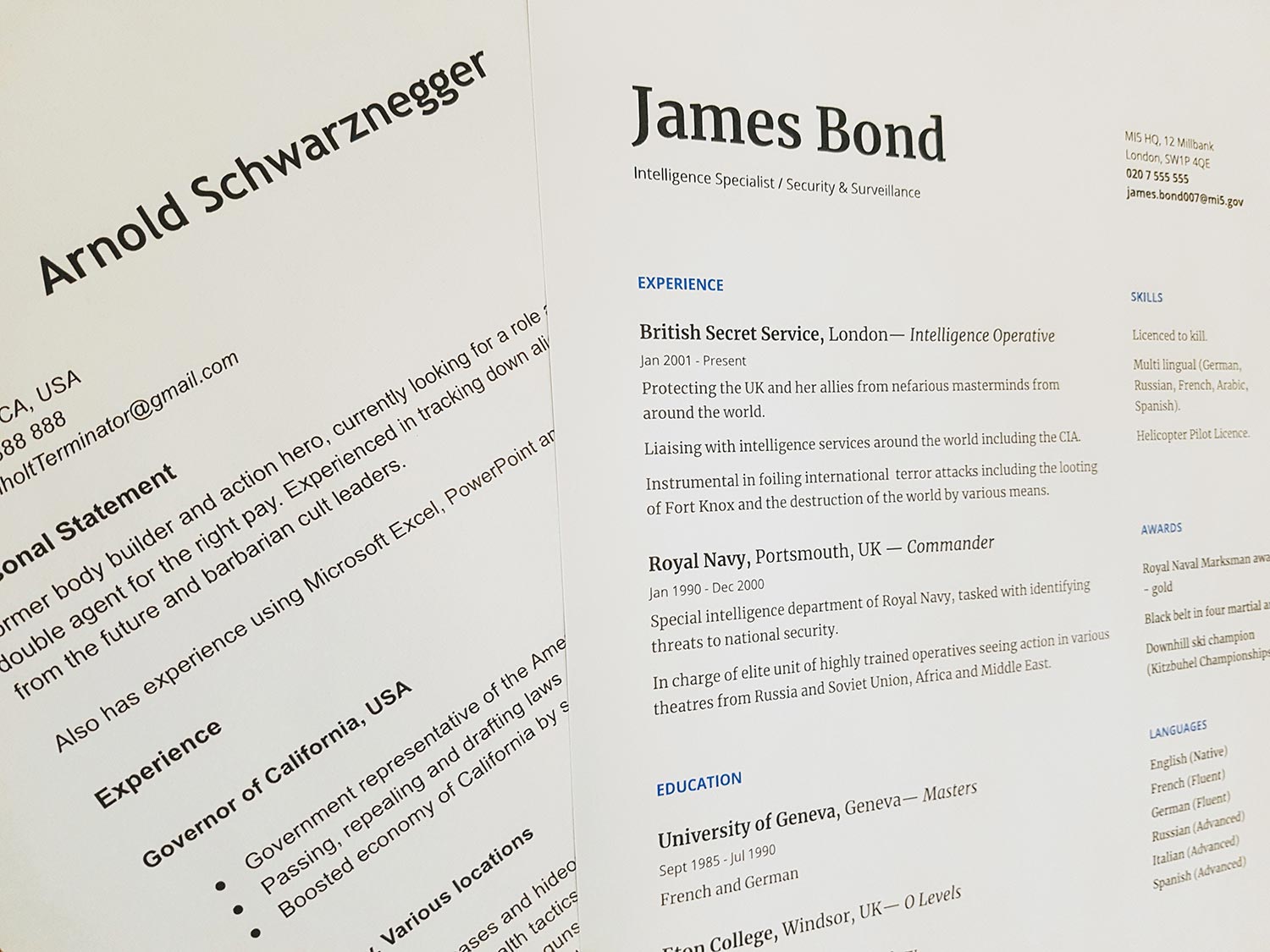Writing a CV – Useful Tips and Tricks
Your CV could well be the first time an employer encounters you as a professional. This means that you have to create a lasting and strong first impression… Do that and you’re well on your way to an an interview and, all being well, a job offer. Whenever they’re hiring, a company receives an influx of CVs. Make sure that yours is one that stands out with our CV writing guide!
First off, don’t try to create a ‘catch all’ CV. Instead, always ensure that your CV is tailored to the company and the role that you’re applying for. As tempting as it may be to send out the same CV en-masse, this approach means your CV has to be plain enough to apply to a number of different roles which in turn almost guarantees that it won’t stand out. Be sure to highlight the roles, experience and skills that are most relevant to the role that you’re applying for.
What sections should I include on my CV?
Your personal details
Keep this very brief. Your CV should contain your full name, your address and your email address. Ensure that the email address is professional and if you feel it would be helpful, include your LinkedIn profile. On the whole, it’s now deemed poor practice and inappropriate to include your photo, your gender or your date of birth.
A personal summary
This is where you highlight your most impressive an relevant achievements, your background, your skills and where you’re hoping to go with your career. Try to avoid generic terms such as ‘team player’ and, instead, think of which personal qualities you have that could benefit your potential employer.
Your career history and work experience
Start with your current (or most recent) job and work backwards. Outline the skills you have and how they generated results, added value or made a particularly good impression. Try to relate those skills you’ve outlined to the specific role that you’re applying for, figuring out where your previous roles can benefit your current role.
If there are any gaps in your employment history, make sure you explain what these are, what you learned from them and, most importantly, outline any skills you gained as a result of your experience.
If you’ve been involved in any temporary or voluntary work, ensure that this is also highlighted under this section.
Education and training
Start with the most recent course you’ve attended (be that a workshop, a residential or even a degree) and work backwards from there. Include the university, college or school you went to, the grades that you achieved and exactly when you achieved them. If you have any professional qualifications, include these too.
Interests and achievements
Your hobbies and interests should be varied and, if possible, related to the job you are applying for. If you’re part of any groups, societies or regular meetups, reference these if you feel they’re relevant as they may serve to highlight your potential for teamwork and collaboration. If you’re into anything a little too out of the ordinary, however, be sure to think very hard before you make it public!
If you’re a fitness or sports enthusiast, you may want to add this in as it tells employers that you appreciate a challenge as well as being fit and healthy.
Additional information
If there’s anything else you feel employers need to know, you can add it here.
This includes gaps in employment or, if you feel it appropriate/want to make such things clear, any restrictions you may face due to illness or disability. This is also an ideal opportunity to let employers know that you have a driving licence or can speak another language.
References
You can either write ‘references available upon request’ or list a couple of referees. At least one of these – ideally both – should be a professional connection rather than simply a character reference. Outline what your relationship is to both of your referees.

What to keep in mind when writing your CV
What have you achieved?
It’s easy to write a list of roles and responsibilities… but this is something that employers can easily scan over and ignore when they’re working through a pile of CVs. Instead, discuss the results of your work and how you added value to your previous employer(s). Did you increase sales? If not, how else did you benefit the business? If you have specific figures you can provide, this is something that will immediately grab an employer’s attention.
Language also plays a key role in how your CV reads to an employer. Use the active voice rather than the passive voice. In other words, instead of saying what you were involved in, just say what the action was. For example, instead of saying “I was involved with company training”, consider saying “I provided a company training programme”.
What do employers need to know?
CVs should be no more than 2 pages long. If yours is starting to edge into a third page, ask yourself “is everything in here necessary?”. Are there old roles listed that are no longer relevant to your career? Have you included more on your CV than is absolutely necessary? Your CV should be concise, getting straight to the point without going on too much. If relevant, you can volunteer or the interviewer can request additional information at interview stage.
How does it look?
Use huge chunks of poorly formatted text and you’re likely to put off the vast majority of people trying to scan your CV. Avoid long paragraphs and don’t be afraid of white space. Instead, aim to be concise by using bullet-pointed lists, shorter sentences and an accessible font. Unless you’re in a creative industry, your CV should have a completely plain white background with black text.
